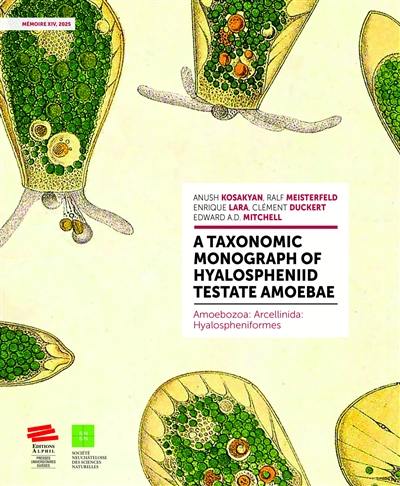
Fiche technique
Format : Broché
Nb de pages : 270 pages
Poids : 586 g
Dimensions : 19cm X 23cm
ISBN : 978-2-88930-428-8
EAN : 9782889304288
A taxonomic monograph of hyalospheniid testate amoebae
Amoebozoa, Arcellinida, Hyalospheniformes
Quatrième de couverture
Since Georges Deflandre published his monograph on the genus Nebela in 1936 no systematic revision of this beautiful group of testate amoebae had been done. In the meantime, the genus was split, and many new species were described. A taxonomic revision was clearly overdue. In this monograph, we present a taxonomic revision of the infraorder Hyalospheniformes (Amoebozoa, Arcellinida), which includes a single family, the Hyalospheniidae. A total of 14 genera, and 97 species and infraspecific taxa are presented in detail.
The monograph includes taxonomic keys; taxon descriptions; ecological, geographical, and taxonomical notes; annotated lists of dubious and incertae sedis species; a list of synonymous names; notes on molecular data; and light and scanning electron microscopic pictures; and/or original line drawings for each species.
This book is designed to benefit protistologists in general, and particularly ecologists and palaeoecologists, by assisting with the ease and accuracy of identification of hyalospheniid testate amoeba species, many of which are useful bioindicators. We also hope that this book will serve as a useful basis for future work regarding the taxonomy, biogeography, and ecology of these beautiful organisms.
Joseph Leidy famously once wrote "How can life be tiresome sol long as there is still a new rhizopod undescribed?" There is no shortage of new Hyalospheniformes awaiting to being described. We hope this book will make the life of passionate taxonomists easier!






